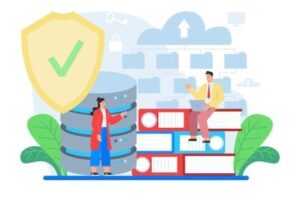Patents are statutory negative rights granted for a limited period of time for 20 years. The patent right conferred is the right to exclude others from making, using, selling or offering for sale the patented invention in any jurisdiction or from importing into the specific jurisdiction. Patents are granted only for the inventions that are novel i.e. new. It is crucial to check the state of art before filing a patent to avoid anticipation.
 The state of art includes patent applications, patents and non-patent literature such as publications, articles, books, thesis, conference proceedings etc. Patent databases are the source of patent applications, publications etc. and helps in identifying the relevant state of art.
The state of art includes patent applications, patents and non-patent literature such as publications, articles, books, thesis, conference proceedings etc. Patent databases are the source of patent applications, publications etc. and helps in identifying the relevant state of art.
Patent database is a collection of technical information that is organized so that it can easily be accessed, managed and updated. Across the globe, there are approx. 180 Patent offices in different countries operating in different languages. Thus, it is important for any database to timely cover the documents of all possible jurisdictions.
About 600,000 patents are granted globally each year covering almost every field of technology. As patent applications disclose a new technology, it is important for the innovators to track the development in the field.
Patent databases are classified into free patent databases and commercial patent databases. The free patent databases are further classified into Government databases and Non-Government databases. The Government databases are generally maintained by the respective Intellectual Property Offices. Each patent database may differ in terms of use of keywords, search strategies, use of special operators, collection of patents, time periods, languages etc.
Free Patent Databases
Free patent databases are available for free access without any subscription and can be accessed directly. This include
- Government Database
- Non-government Database
Government Databases are maintained by the respective patent offices of the country. They include the details of the patent applications only restricted to the respective jurisdiction or globally. Government databases are as follows:
- Patentscope
- Espacenet
- JPO IPDL
- PatFT/AppFT
- INPASS
The non-government databases include Google Patents, Freepatentsonline, Patent Lens etc.
- Google Patents indexes more than 87 million patents and patent applications with full text from 17 patent offices including the USPTO, the EPO and databases from China, Japan and Korea.
- Freepatentsonline has search fields similar to PATFT. It allows for searches including U.S., EP, (European), JP (Japanese), and WO (PCT) patents. Alerts, portfolios, and PDF downloading are available with free registration.
- Patent Lens, created by CAMBIA, an independent, international non-profit has a structured search and good range of coverage. It provides full text of PCT (1978-present), USPTO (AppFT, and PATFT (1976-present), EPO (1980-present) and IP Australia (applications and patents 1998-present).
Commercial Patent Databases
Commercial Patent databases are available for search analytics only upon subscription. The subscription tariffs vary from one database to the other. The coverage and the provision of search strategies and flexibility of operators also vary from one database to the other. The following are the few commercial patent databases:
- TotalPatentOne from LexisNexis
- Patbase from minesoft
- Dialog from ProQuest
- Orbit from Questal
- STN
- Thomson Innovation from Thomson Reuters
- WIPS Global from WIPS
The commercial Patent databases are associated with few advantages such as:
- Value added data: Corrected bibliographic data, improved classification or indexing and timely update
- Sophisticated search and analysis tools: Chemical formula/Structure, sequence searches, patent topographical tools, citation analysis, machine translation
- Integrated access to non-patent literature
- Export of data into multiple formats
- Cost based on preferential access cost
To summarize, no single patent database may not comprehensively cover all relevant information as required and the search services and databases differ in the features offered by them and a combined search and analysis from of commercial and free patent database may be more beneficial.
Author: Deepa Sai
Please contact us at info@origiin.com to know more about our services (Patent, Trademark, Copyright, Contract, IP Licensing, M&A of companies)
Subscribe to YouTube Channel HERE
Join LinkedIn Group: Innovation & IPR
WhatsApp: +91 74838 06607




